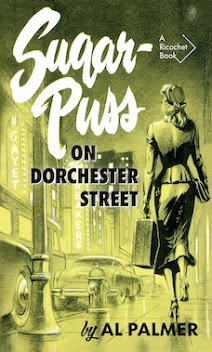
Dazzled
John Gray
Toronto: Irwin, 1984
Very much a fan of John Gray's Billy Bishop Goes to War and 18 Wheels, I was pleased as punch when, as an excitable young pup, I received a signed copy of Dazzled as a Christmas gift in 1985. Sure, the dust jacket offended, but it could be easily slipped off. The interior, however, proved a greater challenge to these blue eyes.
What is that? Helvetica? Fine when used in directions to the nearest washroom, but hard to take over 245 pages. And why is the type so grey? Some silly allusion to the author's surname? A comment on Irwin's anemic publishing program?
I've held onto this garish book for 24 years, determined that one day I would tackle all those faded, Swiss-designed letters. Today was that day.
It's a bit of a shame that I didn't make the effort earlier; I would've enjoyed its criticism of 'sixties culture. In 1985, that decade of peace, love and idleness was pervasive, and I responded with a youthful Sid Vicious-inspired sneer. Though I lowered my upper lip long ago, at about the same time I started shaving, I still enjoyed the novel's ranting:
The edge of the wedge was the Vietnam War, and the schism widened with subsequent revelations, theories and lies about the CIA, pollution, overpopulation, the miltary-industrial complex and the Establishment. The only moral thing for American youth to do was to Drop Out. Oh, some frothing fanatics formed radical groups like the Weathermen and blew up their university library, perhaps killing the Establishment librarian. Most America youth, however, struck a blow for peace, justice and ecological sanity by refusing to participate in the materialism and imperialism so central to modern life.
With typical Yankee ingenuity, American youth found what the youth of the world had always sought: a morally superior non-activity that required no knowledge, effort or skill. In short, they did nothing.
These are the thoughts of the protagonist, Willard, a parasitic, perpetual student whose lazy, hippy dreams are all but destroyed by a disintegrating marriage. He lives a dark comedy, told in a confessional tone that at times reminded me of Jonathan Ames. That said, I think it improbable that the American author has read Dazzled; the novel was never published in the States. In Canada Dazzled received one lone printing. "You'll never find this one," Gray writes on his website, "it went out of print almost the moment it was released."
There was no paperback edition.
Sixteen years passed before the next John Gray novel appeared. In the meantime, the need to shave increased in frequency, and the Martian John Gray invaded our bookstores (and, I'm betting, more than a few Venusian hearts), forcing our John Gray to write as John MacLaughlan Gray.
May we all devote ourselves this New Year to working towards a more just, more beautiful world.

Object: Barring the self-published, Dazzled is undoubtedly one of the ugliest looking novels ever produced in this country. I admit here that this harsh opinion may be influenced by the roller skating disco diva superheroine Dazzler, who was then being pushed by Marvel Comics.
I digress.
The Dazzled dust jacket is particularly susceptible to light; more often than not, spines have faded to a somewhat more palatable shade of pink.
About the author: Having twice seen Gray in person, I can attest that the blue tinted dust jacket photo does him a disservice.

Access: I'm pleased to report that there are plenty listed online. More good news: Near Fine copies can be had for US$5. Public library users outside Vancouver will feel let down; not even the usually reliable Toronto Public Library has a copy.
Correction: A reader kindly points out that the Toronto Public Library does have the book in its collection – three copies, in fact! My apologies for the error. I'll take this opportunity to sing a line in praise of the TPL: In my experience, it's the finest public library in the country.
















